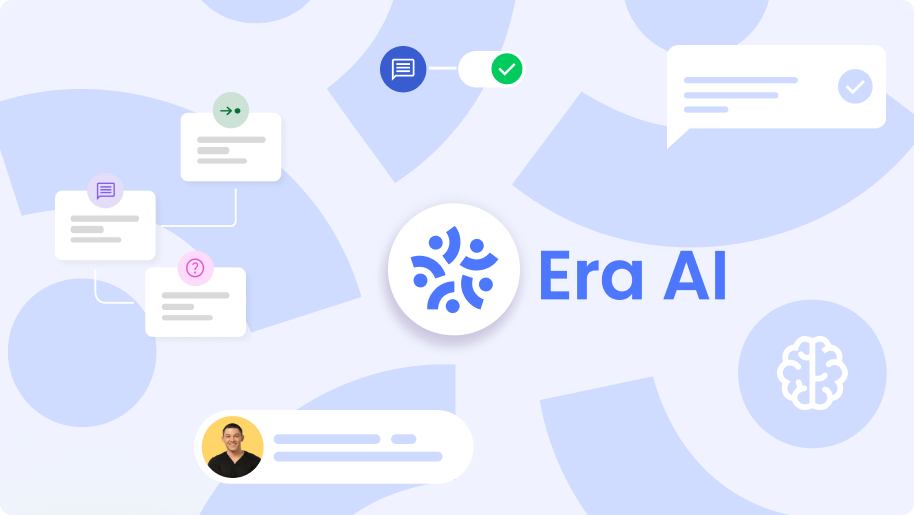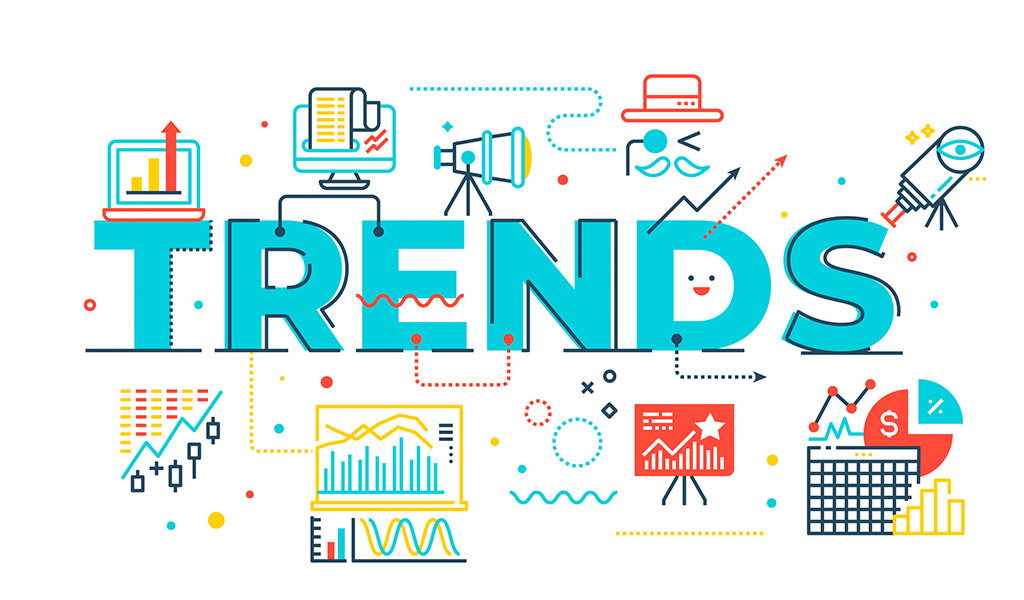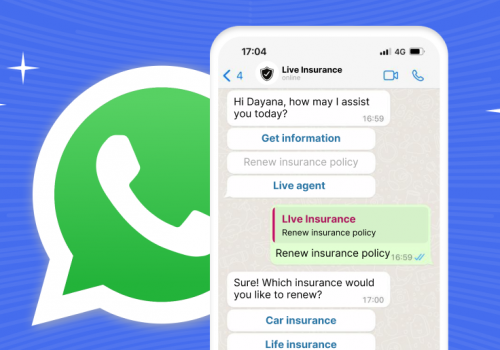Digital Customer Communications. The world of customer communications is constantly changing, and with the rate at which our technology is advancing, these changes are happening faster than ever. People in 1950 are made of the same stuff as the people in 2020, so why are customer expectations constantly evolving? The simple answer is it’s due to the power of technology and how it shapes our experiences. Today we’re going to look at the digital customer communication trends you should look in 2021. It’s never too early to start preparing for the future, especially when it comes to creating the perfect customer experience.
Why Adapting to New Trends is Important
Customers today expect excellent experiences made up of frictionless customer journeys and extreme convenience. When more and more companies offer this experience, the competition gets fierce. Customers also become more accustomed to it.
Consider this theoretical example. When every website requires that you click through 10 pages to get to the page you want, it’s annoying, but it’s also normal. Some of you will remember the days of waiting several minutes for a photo to load on the web page line by line. Sure, it wasn’t fun, but it’s what you expected, you didn’t get mad about it (or at least not often). So, when one website narrows that task down to only going through 2 pages to get to the one you want, you’re blown away. It’s exciting and it leaves an impression on you. You’ll probably visit that site again. But what happens when all websites start to do that? Then it becomes normal. Suddenly, the websites that haven’t adapted are getting left behind. Users become furious that they still have to wade through 10 pages.
This is how expectations shift. It’s about what becomes the new normal. However, there’s also another element to it. Customers can become angry at businesses that don’t adapt because they view it as intentionally frustrating. This doesn’t happen immediately, but it happens at a higher rate the longer time goes on, and the more competing businesses adopt new technologies. At some point, customers start to perceive it as you not prioritizing their experience rather than putting it down to other factors.

8 Digital Customer Trends You Should Look for in 2021
1. Hyper-Personalization
Personalization has been a major focus of businesses for the last five years, and with good reason. One study found that 80% of customers are more likely to purchase products and services from brands that offer personalized experiences. Personalization is better for both customers and businesses. Customers get promotions and offers that are relevant to them. They won’t have to stare at their screen thinking “why am I seeing an ad for this?” or “why does X company think I would be interested in this product?”. And because the ads connect more with customers, they are more likely to buy products, which is great for the company.
Personalization goes beyond marketing and into every way that customers interact with the business. Businesses are increasingly trying to capitalize on personalization to create more meaningful experiences for customers. For example, something as simple as asking a customer for their communication preferences can make a big difference. You then know how they want to be contacted and you can avoid frustrating them by choosing a different method.
This focus is expected to continue into 2021, but with an even greater focus on connecting with customers in the digital spaces they frequent. You can now communicate with customers on Facebook, WhatsApp, Telegram, Twitter, and other popular communication apps. We expect to see more companies reaching out to customers through online messaging channels to offer promotions, updates on orders, or other personalized messages in 2021.
2. Rise of the Chatbots
Chatbots aren’t new, but we do expect them to become even more popular in 2021 and beyond. Chatbots are proving to be extremely useful in elevating customer experiences while also bringing benefits to businesses. Here’s a quick look at the benefits of chatbots:
- They reduce pressure on customer service staff by handling simple customer problems.
- They are great for lead generation, helping the sales team successfully convert more potential customers.
- They are great for collecting customer data that can be analyzed to gain valuable insights into your audience and what makes them tick.
- They allow you to operate 24/7. This is great for customers who don’t fall into the typical 9-5 pattern, or customers who prefer to engage in a more flexible way. It’s also great for approaching global markets where the customers are living in different time zones.
- Increased customer engagement. You are always available to engage with the customer.
- Long term cost savings for the company
Chatbots will become even more prevalent in 2021 and in the years that follow. How do we know? It’s what the current data suggests. Around 50% of businesses now plan to spend more on chatbots than mobile apps. When you consider that chatbots can cut operational costs by up to 30%, it’s easy to see why so many businesses are investing in AI and automation chatbot solutions.
3. Predictive Analytics and Data Science
Data science is booming, and this will continue into 2021. With the rise of clean data gathering tools that are supported by omnichannel platforms, we are able to gain even more from our data every year. Nothing is unimportant when it comes to customer data. Everything has the power to inform how we create goals for the business going forward. Here’s a quick look at some of the data types that businesses are increasingly focusing on:
- Transactional customer data.
- How the customer uses the product
- Customer behavior on the website.
- Text data from live chat, emails, complaint forms, and other customer communications.
- Segmentation – Can you find patterns in your customers based on shared experiences or situations? For example, the age, location, marital status, education, political persuasion, and so on, of your customers.
- The way customers react to changes in product pricing or how they feel about certain promotions.
- The lifetime value of customers.
- Customer preferences.
Once you have enough customer data and are adept at handling and analyzing it, you can start to utilize predictive analytics. This field of AI and machine learning is advancing at a rapid rate right now. So, what does it mean for companies looking to enhance the customer experience? They can:
- Provide real-time feedback – If the customer interacts negatively with a product on the website, their next suggestion will take this into account.
- Customer needs can be predicted -How often will a customer need to purchase your product? You can send a reminder just before they run out.
- Stop customers leaving – You can identify which customers are at risk of leaving based on a range of factors.
4. Omnichannel Approach
Customers will expect companies to have a consistent voice across all platforms. A lot of companies have been working towards this in recent years, but it is now becoming an expectation rather than a “nice to have”. Customers will expect a consistent experience and will become frustrated if they are treated differently on Twitter than over email. They will also become frustrated if they have to continually repeat their customer data or the issues, they are facing each time they contact your business through a different channel. The data should follow the customer wherever they go. Omnichannel platforms are great for this! We expect that more companies will switch to omnichannel in 2021 and move away from a siloed approach.

5. Increased Focus on Privacy and Security
High profile data breaches are happening at an alarming rate in 2020 and this looks set to continue for the foreseeable future. Nefarious individuals work hard to breach systems and gain access to valuable customer data for exploitation purposes. Equally, cybersecurity professionals work hard to combat this, but the cycle continues. Because of these attacks making in it into the news regularly, customers are more conscious than ever about their data and security.
Customers understand that their data is valuable to your business. They also understand that by sharing their data they get something valuable in return (a more personalized experience). However, this doesn’t mean they are happy to give their data up freely. Many consumers no longer trust companies with their data. In 2021, we expect to see more companies implementing tighter privacy and cloud security practices and communicating this to their customers. We also expect that companies will offer more ways for customers to have agency over which data they share. Companies that are serious about privacy and respect with data attract more customers, particularly privacy-conscious ones.
6. More Engagement on Messaging Channels
Rather than creating individual apps for customers, we expect more companies will utilize the already popular messaging platforms to communicate with customers. Having a dedicated app has its benefits, but there are also drawbacks. Customers were happy to have an app when not many companies had an app. Now that business apps are common; consumers are less interested. They simply don’t want to clog up their smartphone home screen with lots of apps that they don’t use very often.
Instead, they prefer to contact the company through an app they already have a use frequently, such as Facebook Messenger or WhatsApp. We expect more companies to start using these channels for customer service rather than focusing all of their attention on live chat within a dedicated consumer app.
7. Intelligent Routing
We expect to see a sharp rise in intelligent ticket routing. More companies will invest intelligent routing AI to ensure that customers get put through to the right agent. The right agent will be the agent who is most adept at handling the situation based on their experience level and individual skillset.
8. Transparency
Customers appreciate honest companies. In fact, one study found that 86% of consumers want brands to be honest. In the era of “fake news” and widespread misinformation, consumers just want to know the truth. They don’t want to read between the lines when browsing a product or service. We expect to see more companies using digital mediums to communicate their commitment to transparency. They might do this by:
- Creating relationships with customers on social media. Being friendly and personable toward consumers and engaging in real conversations with them.
- Proudly communicating their privacy and data protection policies.
- Swiftly admitting to mistakes and keeping promises to correct them.
- Being transparent with pricing and other parts of the customer journey.
That’s our 8 digital customer communication trends for 2021! These trends have been driven forward by the continued advancement of artificial intelligence and data science. As these fields continue to advance, we expect to see more changes in these areas, and maybe even the emergence of new technology that will shape customer experiences in a completely new way.




















